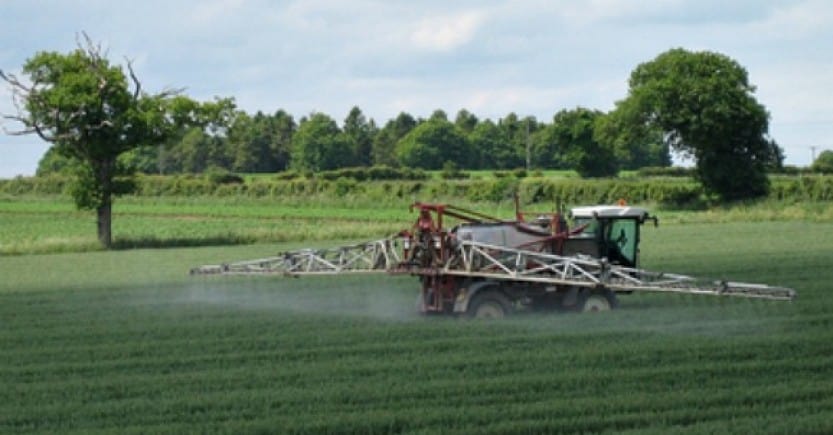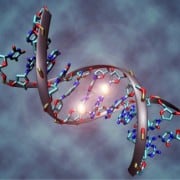Autism Risk Higher Near Pesticide-Treated Fields
LINDSEY KONKEL
Environmental Health News; June 23, 2014
Babies whose moms lived within a mile of crops treated with widely used pesticides were more likely to develop autism, according to new research published today.
The study of 970 children, born in farm-rich areas of Northern California, is part of the largest project to date that is exploring links between autism and environmental exposures.
The University of California, Davis research – which used women’s addresses to determine their proximity to insecticide-treated fields – is the third project to link prenatal insecticide exposures to autism and related disorders.
One in every 68 U.S. children has been identified with an autism spectrum disorder – a group of neurodevelopmental disorders characterized by difficulties with social interactions, according to the Centers for Disease Control and Prevention.“The weight of evidence is beginning to suggest that mothers’ exposures during pregnancy may play a role in the development of autism spectrum disorders,” said Kim Harley, associate director of University of California, Berkeley’s Center for Environmental Research and Children’s Health. She was not involved in the new study.
The biggest known contributor to autism risk is having a family member with it. Siblings of a child with autism are 35 times more likely to develop it than those without an autistic brother or sister, according to the National Institutes of Health.
By comparison, in the new study, children with mothers who lived less than one mile from fields treated with organophosphate pesticides during pregnancy were about 60 percent more likely to have autism than children whose mothers did not live close to treated fields. Most of the women lived in the Sacramento Valley.
When women in the second trimester lived near fields treated with chlorpyrifos – the most commonly applied organophosphate pesticide – their children were 3.3 times more likely to have autism, according to the study, published in the journal Environmental Health Perspectives.
Chlorpyrifos, once widely used to kill insects in homes and gardens, was banned for residential use in 2001 after it was linked to neurological effects in children. It is still widely used on crops, including nut trees, alfalfa, vegetables and fruits.
The first report of a link between pyrethroids and autism
The study also is the first to report a link between pyrethroids and autism. Application of pyrethroids just prior to conception meant an increased risk of 82 percent, and during the third trimester, the risk was 87 percent higher.
That finding is particularly concerning because “pyrethroids were supposed to be better, safer alternatives to organophosphates,” said the study’s senior author, Irva Hertz-Picciotto, an epidemiologist who leads the UC-Davis project to investigate environmental and genetic links to autism.
Use of pyrethroids has increased in recent years, both on farms and in the home, due to bans of other insecticides. Some studies now suggest pyrethroids may carry risks for developing fetuses.
But while the risks reported in the study pale in comparison to some hereditary factors, Hertz-Picciotto said they are comparable to other risks for autism, such as advanced parental age or not taking prenatal vitamins.The autism risk that could be attributed to an individual pesticide is likely slight, said Alycia Halladay, senior director for environmental and clinical sciences at the nonprofit Autism Speaks. “We need to understand how multiple exposures interact with each other and with genetics to understand all that is involved in the causes of autism,” she said.
“In any child who develops autism, a combination of genetic and environmental factors are at work. There’s an accumulation of insults to the system. What we’re seeing is that pesticides may be one more factor that for some kids may push them over the edge,” she said.
We need to understand how multiple exposures interact with each other and with genetics to understand all that is involved in the causes of autism.” –Alycia Halladay, Autism Speaks
In 2012, the U.S. Environmental Protection Agency required buffers around fields near homes and schools to help reduce exposure to chlorpyrifos.
More than 1.1 million tons of chlorpyrifos were applied to 22,000 California farms in 2012, down from 2 million pounds on 40,000 farms in 2005, according to the database from the state Department of Pesticide Regulation.
Most of the mothers lived near fields treated with several different pesticides over their pregnancies, so it’s difficult to tease apart the potential risk of individual chemicals, said epidemiologist Janie Shelton, the lead study author. Shelton is now a consulting scientist to the United Nations. The study also reported an increased risk of developmental delays, but not autism, in kids whose moms lived near fields where carbamates, including methomyl and Sevin, were applied. The researchers said that pesticides could impair brain development and signaling in a way that affects social interactions, learning and behavior.
Some studies are starting to look how environmental exposures may act differently in people whose genetics make them more susceptible. Earlier this year, researchers showed that people with a gene variant associated with autism and high exposure to air pollution had an increased risk of autism over people with the same gene variant but lower exposure to air pollution.
Next, Shelton hopes to look for autism risk from pesticide exposure among mothers with certain genetic variations. “We need to know if some moms are at higher risk than others and what that risk is. Knowing who is most vulnerable is key to understanding how to better protect them,” she said.








